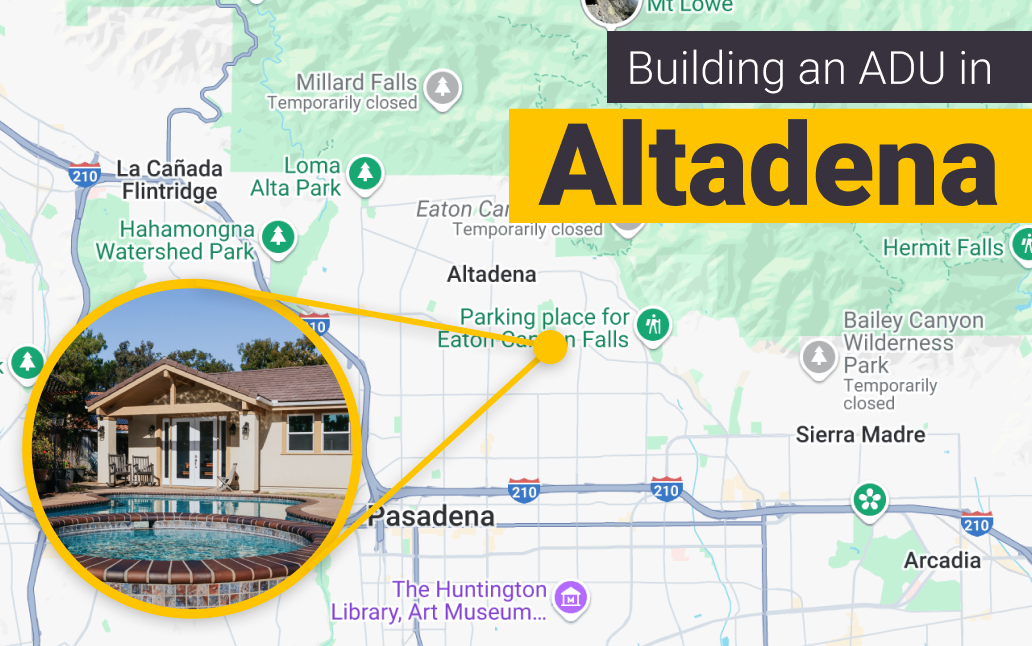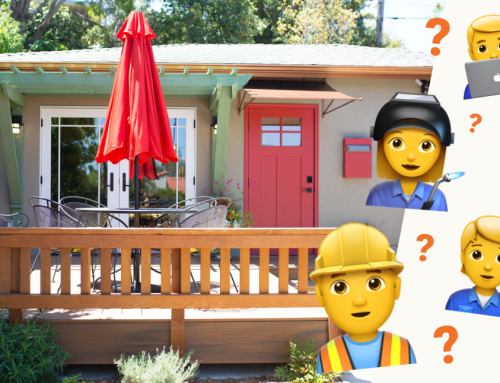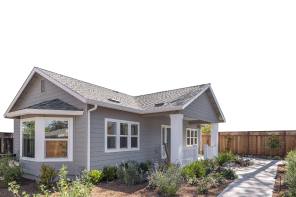Altadena has long been a favorite for homeowners looking for a quieter, more scenic alternative to nearby Los Angeles. Nestled against the San Gabriel Mountains, the neighborhood offers a mix of historic charm and natural beauty that’s hard to find elsewhere in the region. In recent years, more property owners in Altadena have started exploring Accessory Dwelling Units (ADUs) as a way to expand housing, increase property value, or bring extended family closer.
The 2025 fires left a lasting impact on parts of the community, shifting how many people think about housing, safety, and resilience. While this blog focuses on the process of building an ADU in Altadena, it also looks at how recent events have influenced building codes, homeowner priorities, and what it means to rebuild with intention.
Why Build an ADU in Altadena?
Altadena’s larger lot sizes, quiet streets, and strong community feel make it an appealing place to add an Accessory Dwelling Unit. Homeowners here often have more space to work with compared to denser areas in Los Angeles.
This opens up more design options and reduces some of the common layout challenges. Many homeowners already have detached garages or open backyard space they can convert or build on.
In the wake of the fires that destroyed so many homes in the area, more residents are thinking about how to rebuild in a way that offers both resilience and flexibility.
Adding an ADU can serve as a temporary residence during reconstruction. It can also become a long-term home for displaced family members or a source of income to help offset rebuilding costs. The fires have prompted more thoughtful design choices as well, with an emphasis on fire-resistant materials and smarter site planning that considers future risks.
Altadena Zoning and ADU Requirements
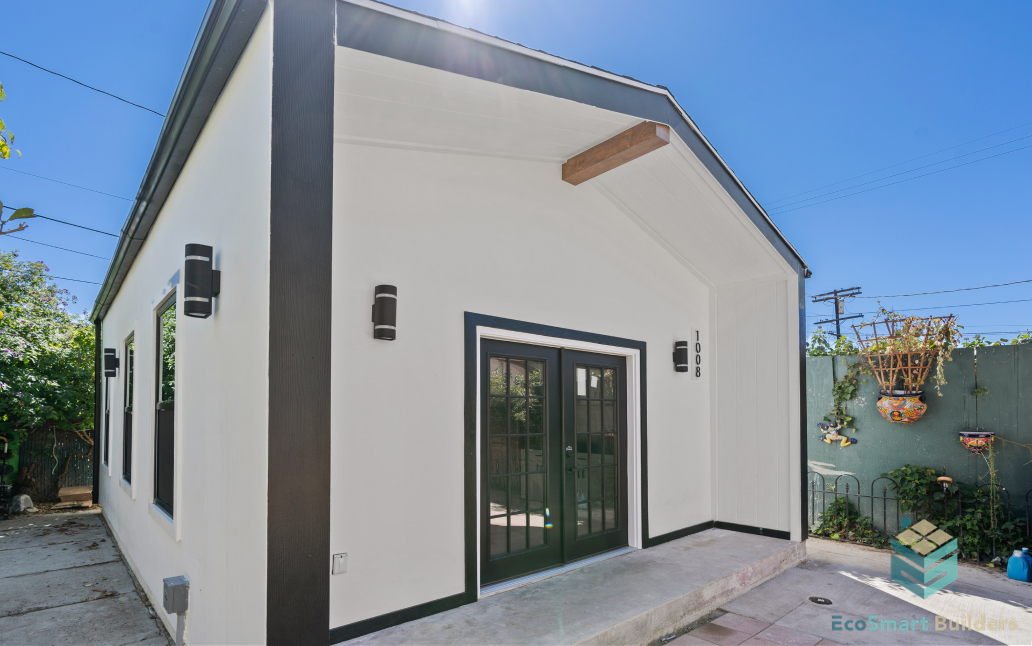
Since Altadena is an unincorporated part of Los Angeles County, the county sets and enforces the ADU rules instead of a local city council. That means property owners must follow L.A. County’s ADU ordinance, which is generally more ADU-friendly than city-level regulations.
Here are some key zoning and development standards to know:
Lot Size
There’s no minimum lot size required to build an ADU in Altadena. If your property falls under single-family or multi-family zoning and has enough space for an ADU, you likely qualify to build one. California law guarantees the right to build at least one 800 sq ft ADU, even if local zoning rules like front setbacks would normally prohibit it.
Setbacks
Detached ADUs must have a minimum rear and side setback of 4 feet. However, if you convert a garage or another existing structure within the current footprint, you do not need to meet these setback requirements.
Height Limits
In most cases, a detached ADU can be up to 16 feet tall. If the unit sits within a half-mile of a transit stop or you’re building an ADU on a property with a multi-family structure, the county allows you to build up to 18 feet. If you attach the ADU to the main house, you can build up to 25 feet unless your local building code sets a lower maximum height.
You can learn more about regulations updates for 2024 and 2025 here.
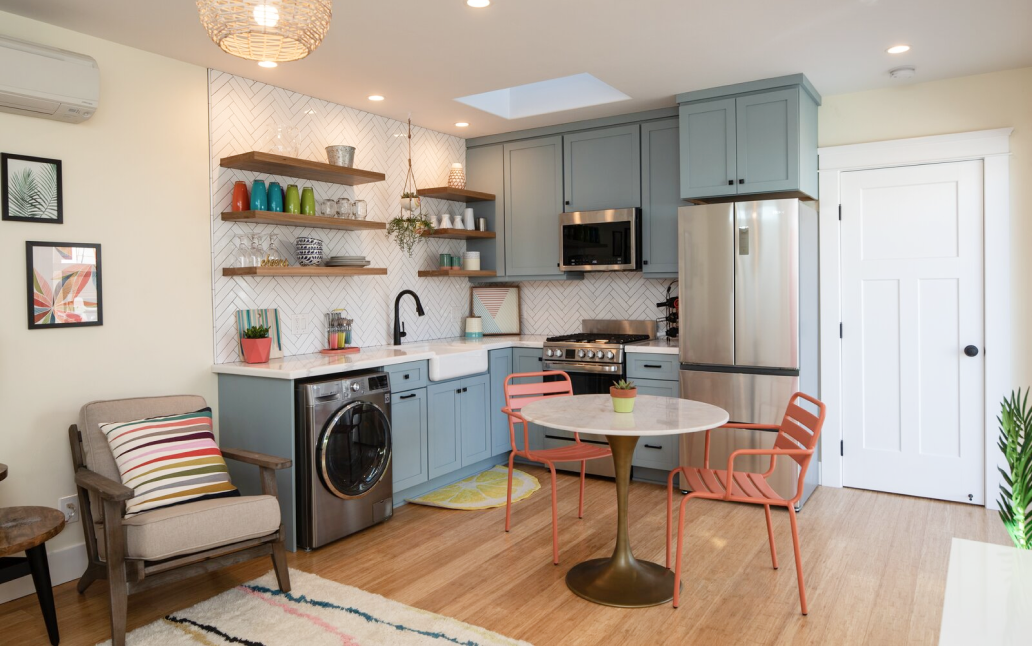
Parking Requirements
If your property is within half a mile of public transit, you are not required to provide additional parking for your ADU. If parking is required, you can provide it as tandem parking on an existing driveway. No replacement parking is needed when you convert a garage into an ADU.
Permitting Timeline
Los Angeles County is required to approve or deny your ADU permit within 60 days of receiving a complete application and they must include all required revisions in one go. Still, backlogs and plan check comments can cause delays, so working with a designer familiar with Altadena and county processes is essential.
Navigating county-level rules can feel overwhelming, especially in a post-fire context where some zoning overlays or environmental considerations might apply. Getting guidance early on can help you avoid costly mistakes or delays.
How the 2025 Fires Are Shaping ADU Development
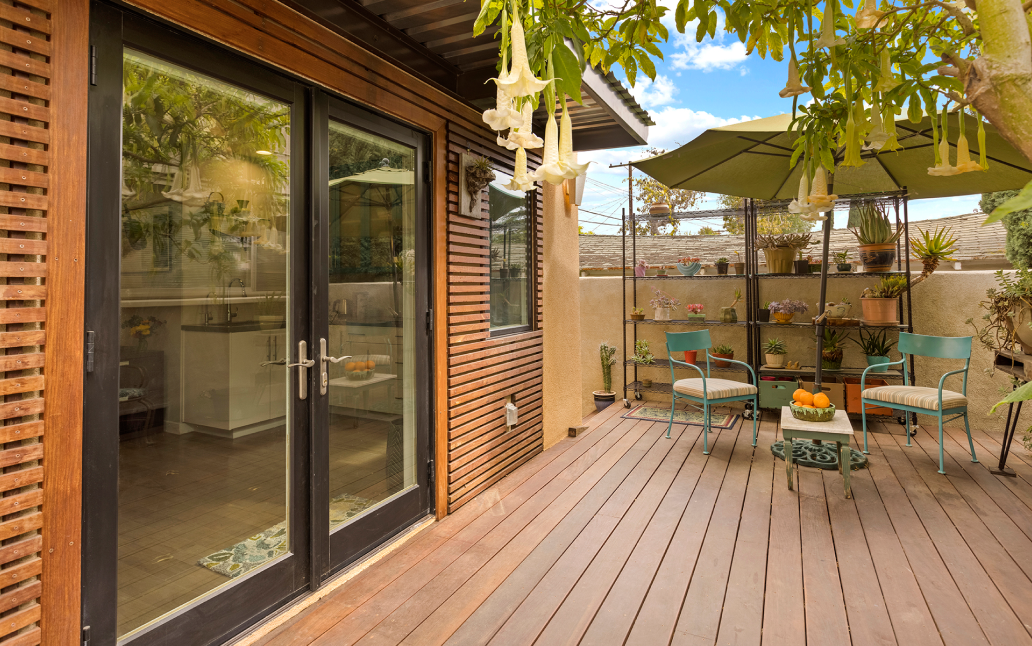
The 2025 fires left a visible mark on parts of Altadena, displacing families and damaging dozens of homes near the foothills. In the aftermath, rebuilding has gone hand in hand with a growing interest in ADUs.
For some homeowners, adding an ADU has become part of a long-term recovery plan. These units offer a way to bring family back onto the property, generate income to help cover rebuilding costs, or add flexible space while the main home is under repair.
The impact of the fires has also highlighted the deep economic divide between communities. In areas like Pacific Palisades, where most residents have access to greater financial resources and higher insurance payouts, recovery has looked very different.
Homeowners there often had the means to rebuild quickly or relocate temporarily without significant disruption. In Altadena, the fires hit a community made up largely of working-class families, according to a study by UCLA Latino Policy and Politics Institute. The road to recovery has been slower, and the financial strain has been more intense.
This context makes the role of ADUs even more critical. For many Altadena homeowners, an ADU is not just an opportunity to add extra living space. It can create long-term financial stability, provide housing for extended family, or act as a safety net in the face of future disasters. As families look for ways to stay in their neighborhoods and avoid displacement, ADUs offer a practical and accessible solution. Building smarter and more affordably is no longer a preference—it’s a necessity.
Finding the Right Professionals
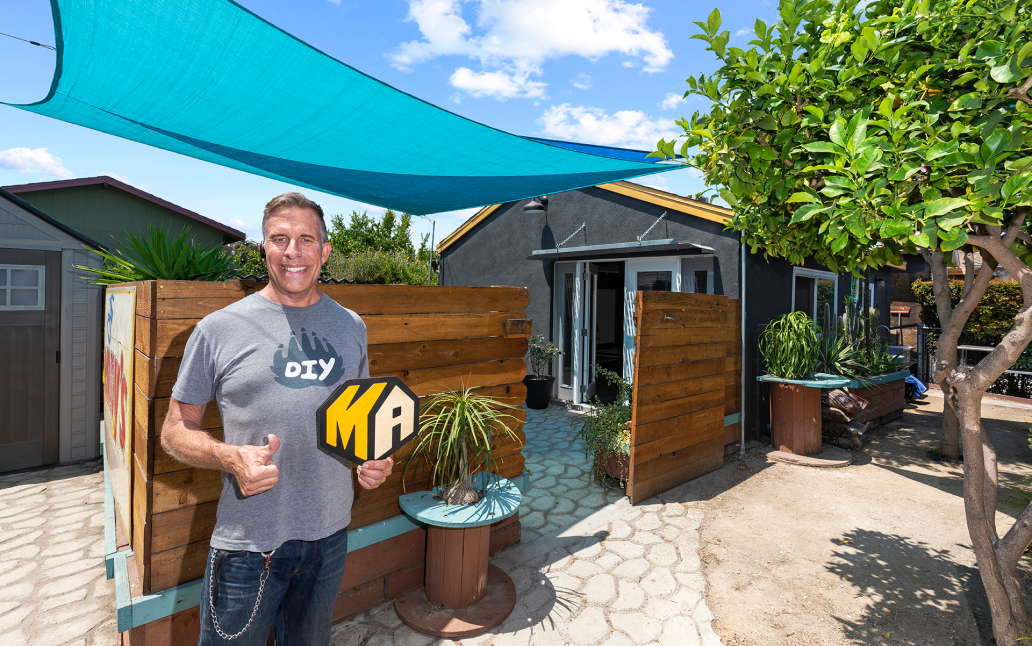
Rebuilding after a disaster brings urgency, stress, and a flood of decisions. Unfortunately, it also creates an opening for predatory contractors and unlicensed professionals looking to take advantage of vulnerable homeowners. In the wake of the 2025 fires, Altadena has seen a rise in contractors offering quick builds and cut-rate ADUs that promise more than they deliver.
This makes it even more important to work with licensed, experienced professionals who understand both Los Angeles County building codes and the specific challenges of building in fire-prone areas. Look for contractors and designers with a track record of permitted ADU projects in unincorporated areas like Altadena. Before you sign:
- Verify licenses
- Check insurance coverage
- Read reviews from past clients
A legitimate professional will never pressure you into signing a contract on the spot, and they will be transparent about costs, timelines, and permit processes.
If you’re unsure where to start, Maxable can help. All general contractors and designers in our network are thoroughly vetted by our team. We verify licenses, confirm up-to-date insurance, and review their project history to ensure you’re matched with a professional who knows what they’re doing and has the track record to prove it. Book a free call with Maxable, and we’ll connect you with a trusted expert who’s ready to guide you through the process—no guesswork, no shortcuts.

